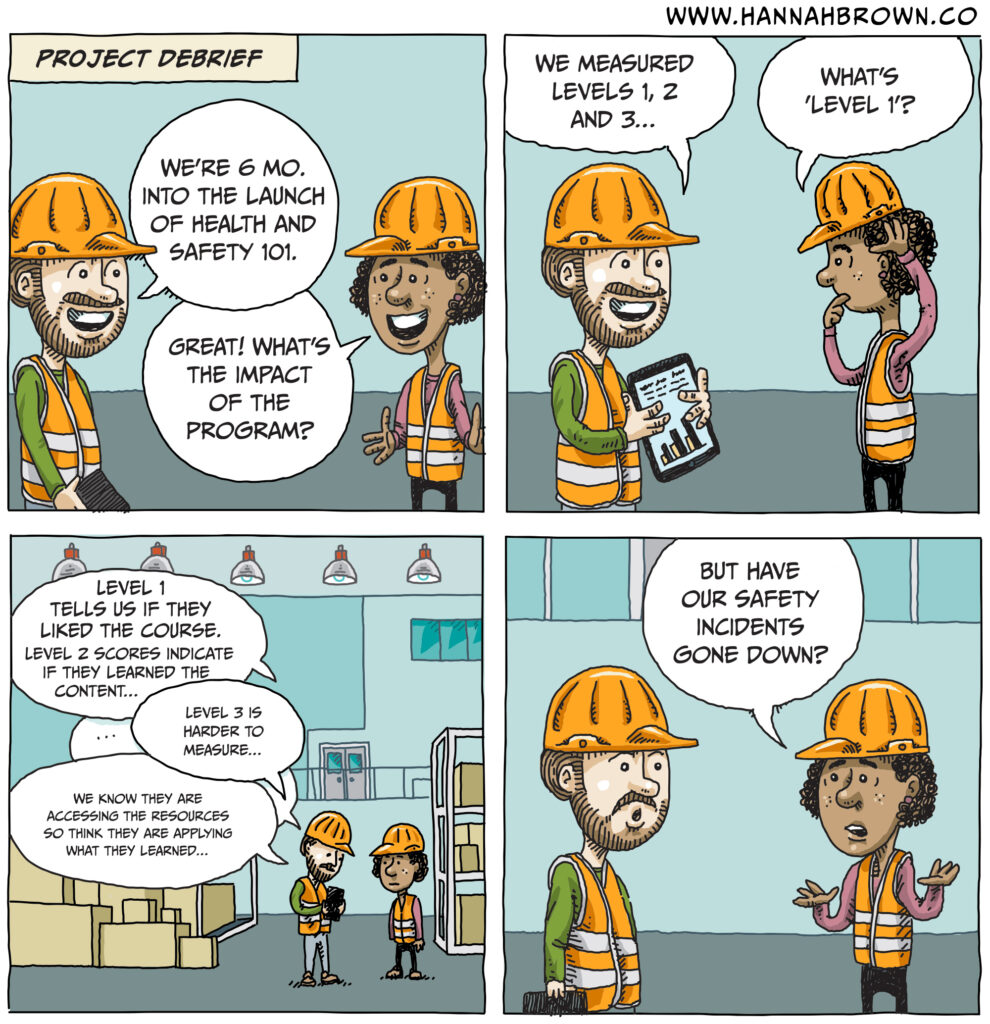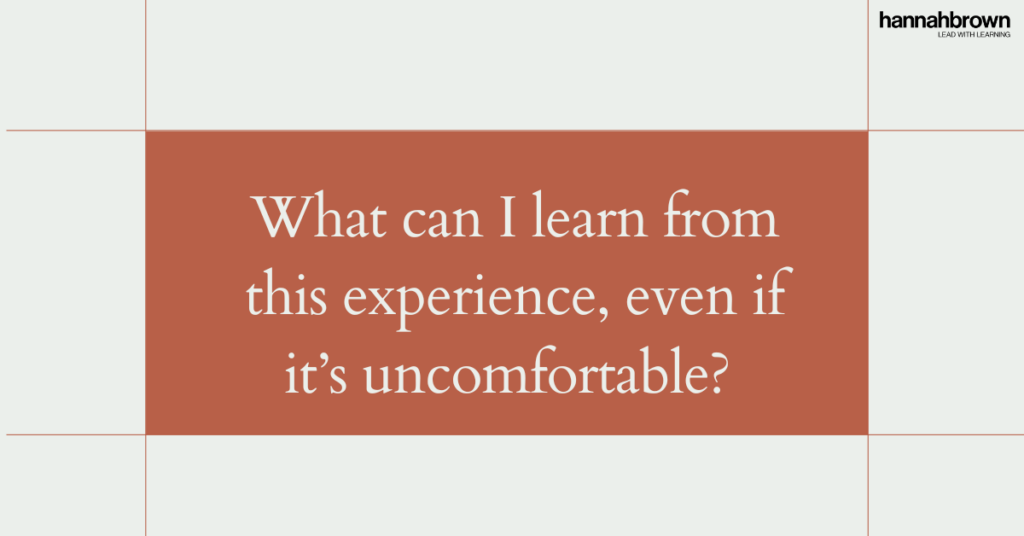Should we Measure the Impact of Training?

I’ve been working in learning and development for over 20 years. A consistent message I’ve heard over these decades at conferences, workshops and from clients is the challenge in measuring the impact of formal training programs. There are a few issues that contribute to this.
- Too often the training function provides poorly designed and executed courses. Sorry if that offends anyone, but it’s the truth. There’s a lot of really bad training out there.
- Every industry and field loves its acronyms. As the comic suggests, though, when learning professionals hold onto their acronyms or their learning language, they fail to communicate with clients in their organization. The training function needs to be bilingual – speak learning with each other, but speak business with their clients.
- Finally, we rely too much on formal training! It’s expensive, takes far too much time to create, and so is often outdated just as it’s ready to implement. Add AI to the mix, and so much of what people need to know is already at their fingertips, making formal training programs even more redundant.
We need to move training out of the classroom and put learning into the hands of leaders.
Let’s face it, we learn the most when we’re doing our job – with our colleagues and guided by our leader. The training function needs to equip leaders to build a culture of learning on their teams so employees can learn and grow on the job. Learning professionals will recognize this as ‘learning in the flow of work’ (a great jargon phrase!) Business leaders will recognize this as common sense.
How a Learning Mindset Transforms Leadership

While a growth mindset is essential for personal and team development, a learning mindset goes a step further. A learning mindset focuses on the belief that abilities can be developed and the active pursuit of knowledge, curiosity, and continuous improvement in daily work. Leaders with a learning mindset see every situation as an opportunity to learn, not just grow, and they encourage their teams to do the same.
A learning mindset asks: “What can I learn from this experience, even if it’s uncomfortable?” For people leaders, this means creating an environment where feedback, reflection, and experimentation are part of everyday work, not something reserved for formal training sessions. By fostering this mindset, leaders inspire their teams to continuously seek improvement, embrace challenges as learning opportunities, and remain open to new ways of thinking.
When you lead with learning, you help your team stay adaptable and innovative in an ever-changing environment. Encourage questions like: “What are we learning from this challenge?” instead of just focusing on outcomes. This shift enhances individual growth and builds a resilient and ready team for whatever comes next.
Overcoming Barriers to Continuous Learning

Many organizations struggle to incorporate continuous learning and build long-term growth. The pressure to meet immediate results pushes learning initiatives to the back burner. As HR and L&D leaders, it’s essential to support managers in embedding learning into their teams’ daily routines without compromising productivity.
One key barrier is the misconception that learning takes time away from work. But, when integrated properly, learning enhances productivity by making employees more skilled, motivated, and, ultimately, more efficient. HR can provide tools and frameworks that help leaders create learning moments in everyday interactions. From team check-ins that include reflective questions, to feedback that promotes growth, HR can influence the entire organization’s approach to learning.
Encourage leaders to shift the narrative: Learning isn’t an extra task – it’s part of the job. By embedding learning into the flow of work, teams increase capacity for today and capability for tomorrow.
In case you missed it
I’ve shared some additional posts online. Here they are, in case you missed them.
- LLG conversation cards: Learning Mindset (video link)
- Great Leaders Adapt: Support Your Team’s Unique Needs (video link)
- How to use culture cards (video link)
